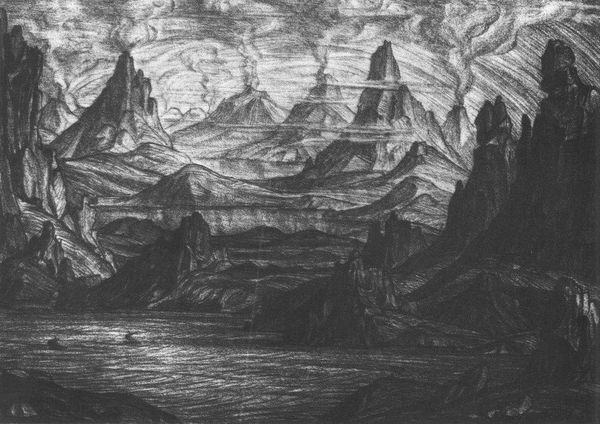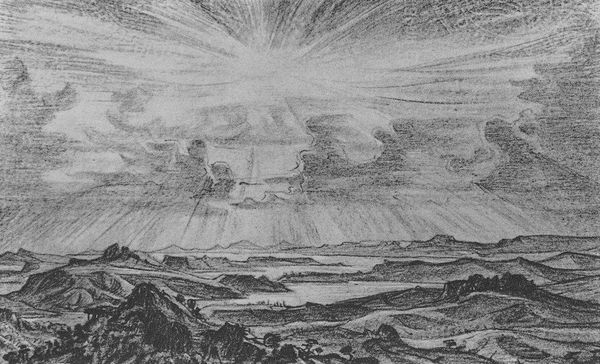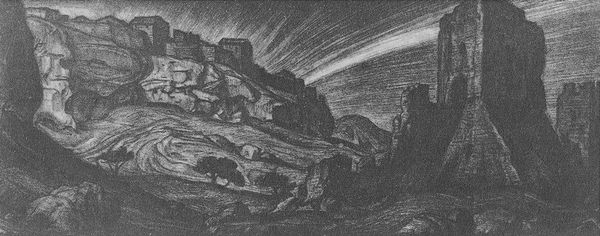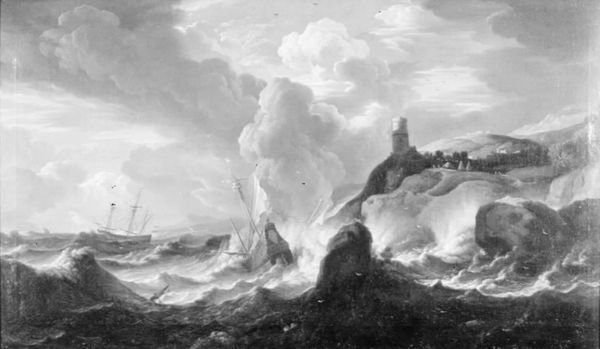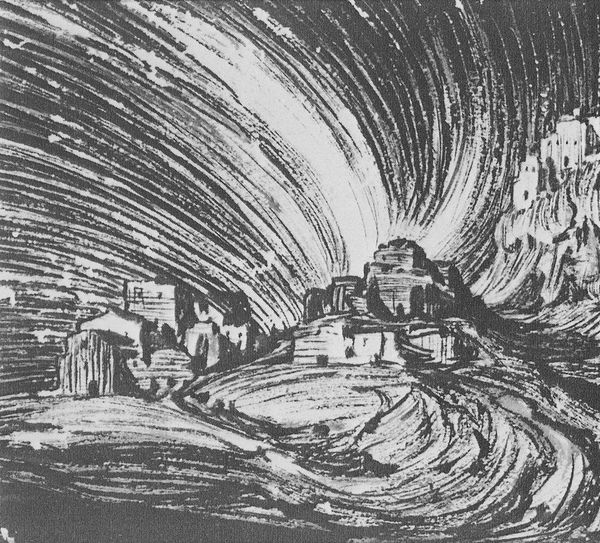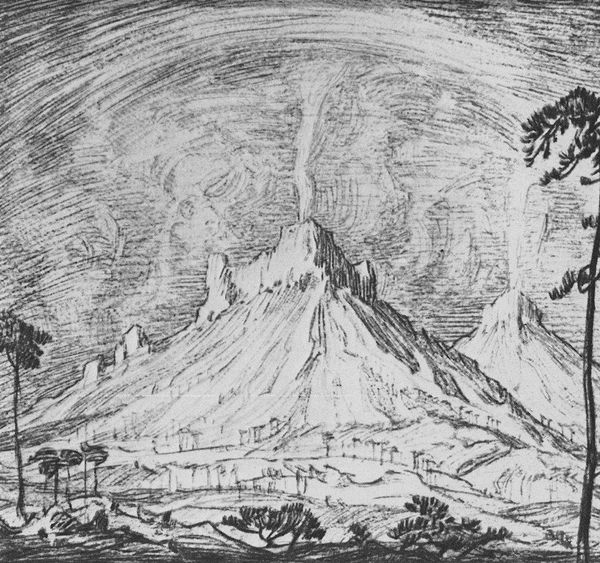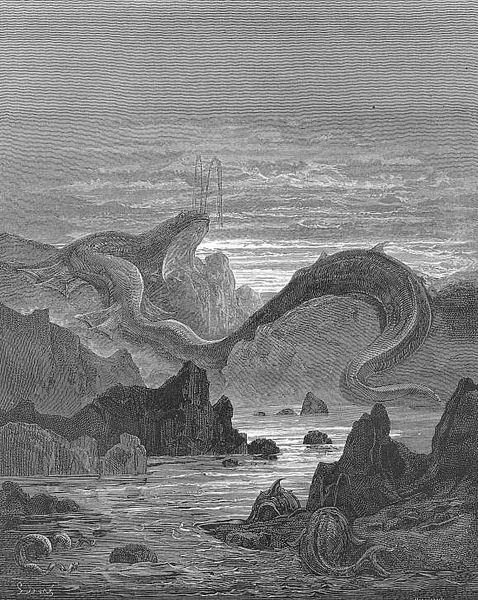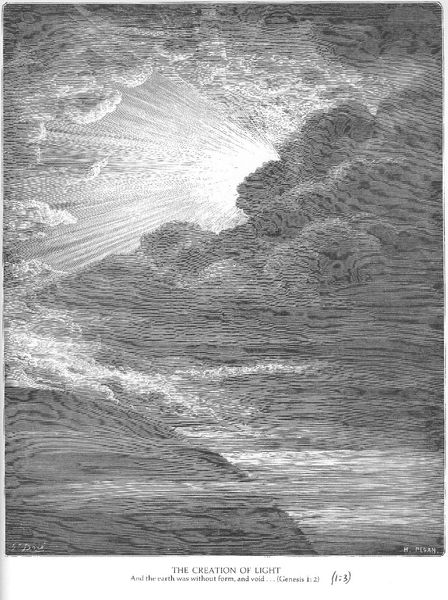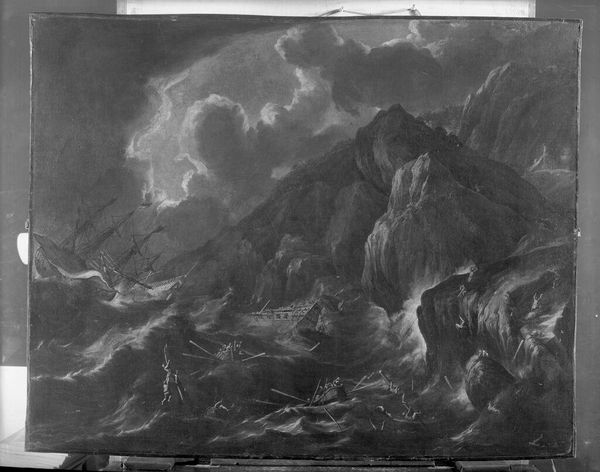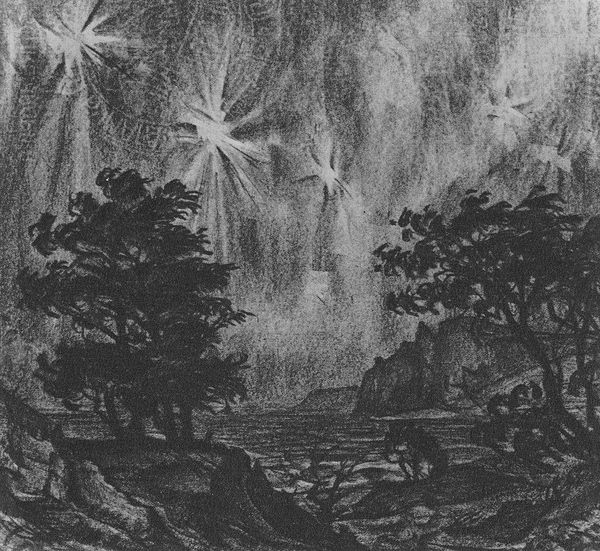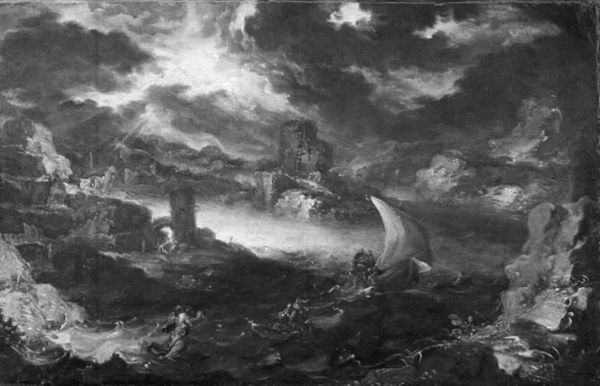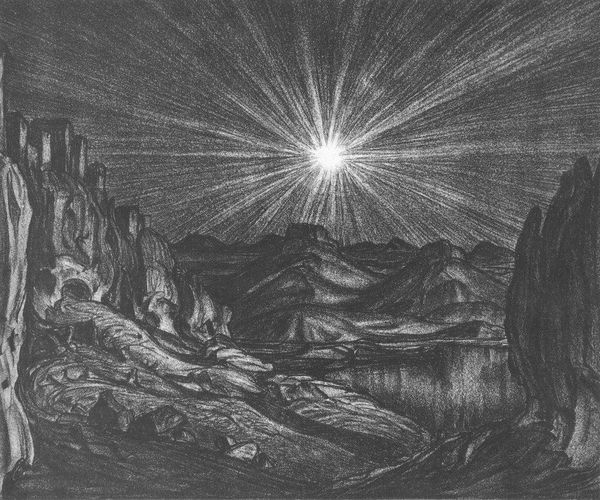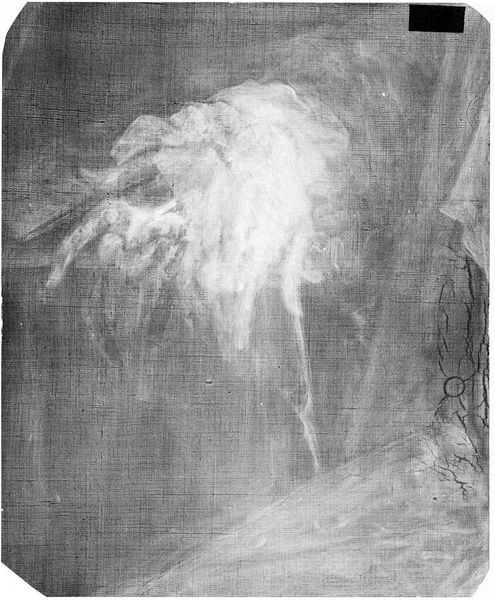
Copyright: Public domain
Curator: Konstantin Bogaevsky’s charcoal drawing, "Ancient Land," completed in 1922, offers a dramatically rendered landscape. Editor: Immediately, I'm struck by its somber mood, almost oppressive. The tumultuous sky dominates the composition, pressing down on a desolate terrain. It’s reminiscent of post-apocalyptic scenery. Curator: The artist certainly masterfully employs chiaroscuro, creating a dynamic play between light and shadow. Note how the sweeping lines of the sky contrast with the sharply defined ridges of the mountains below, achieving depth and a captivating visual rhythm. Editor: It is visually impressive, yet the "ancient" of it all feels a bit romanticized. Considering Bogaevsky's own displacement during periods of upheaval in Crimea, one could argue that the imagery reflects a profound sense of loss and the erasure of cultural identity in the face of historical change. The romantic ruin presented could point to the literal destruction and collapse of the social structures that held up Crimea for centuries prior. Curator: Interesting to interpret that ruin through the lens of social disruption rather than pure formalism! While context enhances meaning, it is the formal choices such as line, value, and texture that invite that reflection to begin with. The density of charcoal strokes, for instance, renders texture which translates to atmospheric emotion so powerfully. Editor: Right, but those dense strokes can also speak to political oppression, censorship and silencing—visual metaphors of suffocation and a loss of visibility and legibility! In short, for certain audiences, it is a powerful commentary about the ravages of historical power, which are formally rendered using those elements that you cited. Curator: Your analysis is very astute. These two modes of thought certainly underscore how both can enrich appreciation of this piece, each offering a path to explore "Ancient Land," both formally and socio-politically. Editor: Exactly! And I find that tension—between artistic autonomy and its role within larger socio-political narratives—the core from which interpretation and richer insights are generated!
Comments
No comments
Be the first to comment and join the conversation on the ultimate creative platform.
